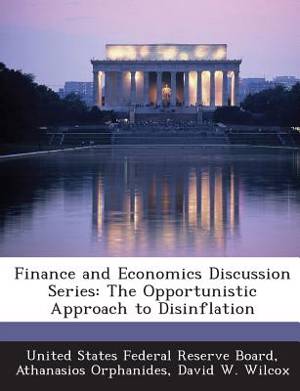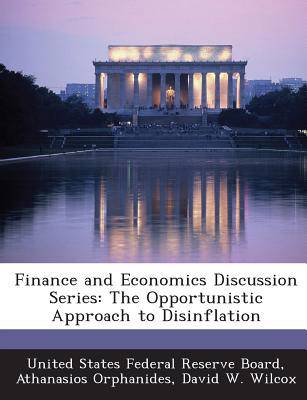
Je cadeautjes zeker op tijd in huis hebben voor de feestdagen? Kom langs in onze winkels en vind het perfecte geschenk!
- Afhalen na 1 uur in een winkel met voorraad
- Gratis thuislevering in België vanaf € 30
- Ruim aanbod met 7 miljoen producten
Je cadeautjes zeker op tijd in huis hebben voor de feestdagen? Kom langs in onze winkels en vind het perfecte geschenk!
- Afhalen na 1 uur in een winkel met voorraad
- Gratis thuislevering in België vanaf € 30
- Ruim aanbod met 7 miljoen producten
Zoeken
Finance and Economics Discussion Series
The Opportunistic Approach to Disinflation
Athanasios Orphanides, David W Wilcox
Paperback | Engels
€ 21,45
+ 42 punten
Uitvoering
Omschrijving
This paper explores the theoretical foundations of a new approach to monetary policy. Proponents of this approach hold that when inflation is moderate but still above the long-run objective, the Fed should not take deliberate anti-inflation action, but rather should wait for external circumstances-such as favorable supply shocks and unforeseen recessions-to deliver the desired reduction in inflation. While waiting for such circumstances to arise, the Fed should aggressively resist incipient increases in inflation. This strategy has come to be known as "the opportunistic approach to disinflation." We deduce policymaker preferences that rationalize the opportunistic approach as the optimal strategy for disinflation in the context of a model that is standard in other respects. The policymaker who is endowed with these preferences tends to focus on stabilizing output when inflation is low, but on fighting inflation when inflation is high. We contrast the opportunistic approach to amore conventional strategy derived from strictly quadratic preferences.
Specificaties
Betrokkenen
- Auteur(s):
- Uitgeverij:
Inhoud
- Aantal bladzijden:
- 34
- Taal:
- Engels
Eigenschappen
- Productcode (EAN):
- 9781288719341
- Verschijningsdatum:
- 6/02/2013
- Uitvoering:
- Paperback
- Formaat:
- Trade paperback (VS)
- Afmetingen:
- 189 mm x 246 mm
- Gewicht:
- 81 g

Alleen bij Standaard Boekhandel
+ 42 punten op je klantenkaart van Standaard Boekhandel
Beoordelingen
We publiceren alleen reviews die voldoen aan de voorwaarden voor reviews. Bekijk onze voorwaarden voor reviews.









